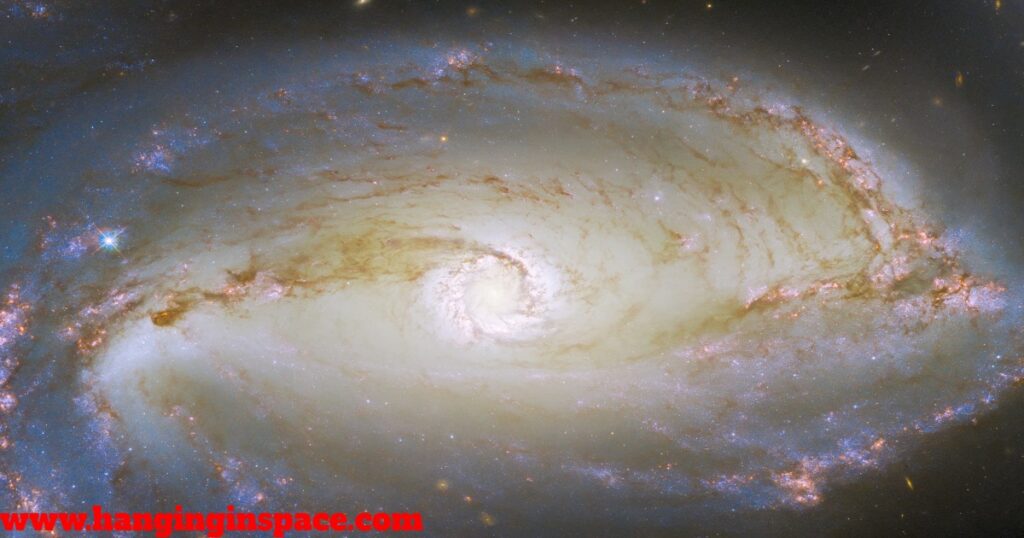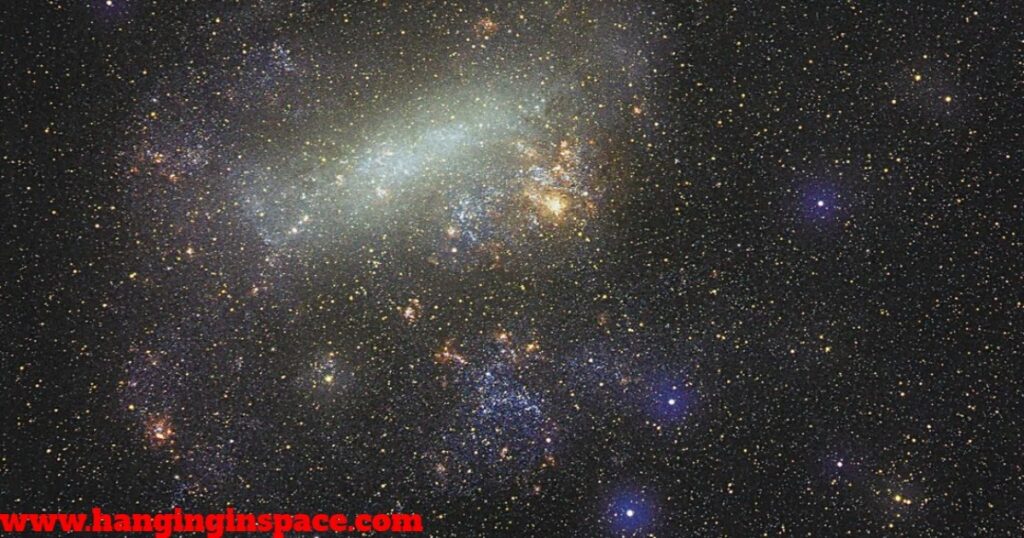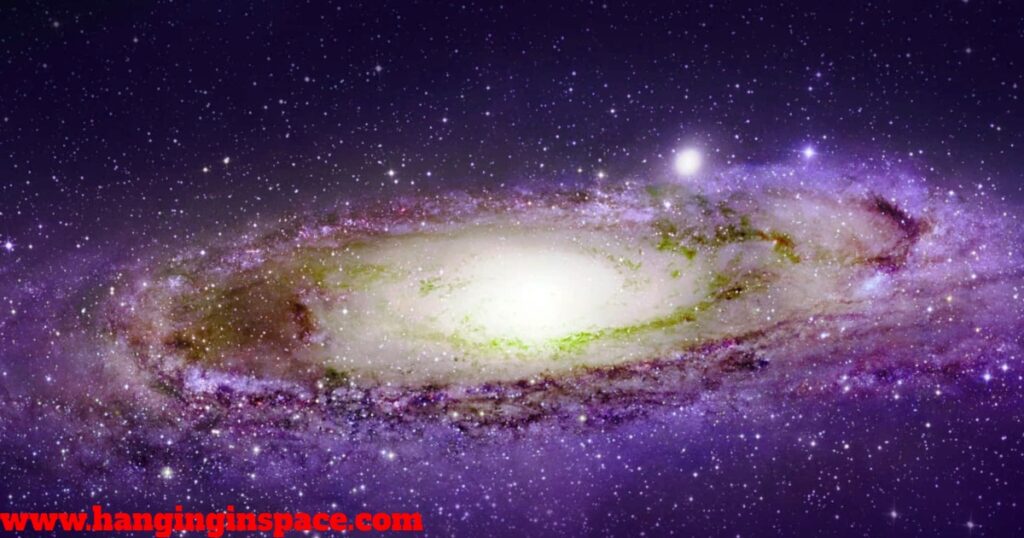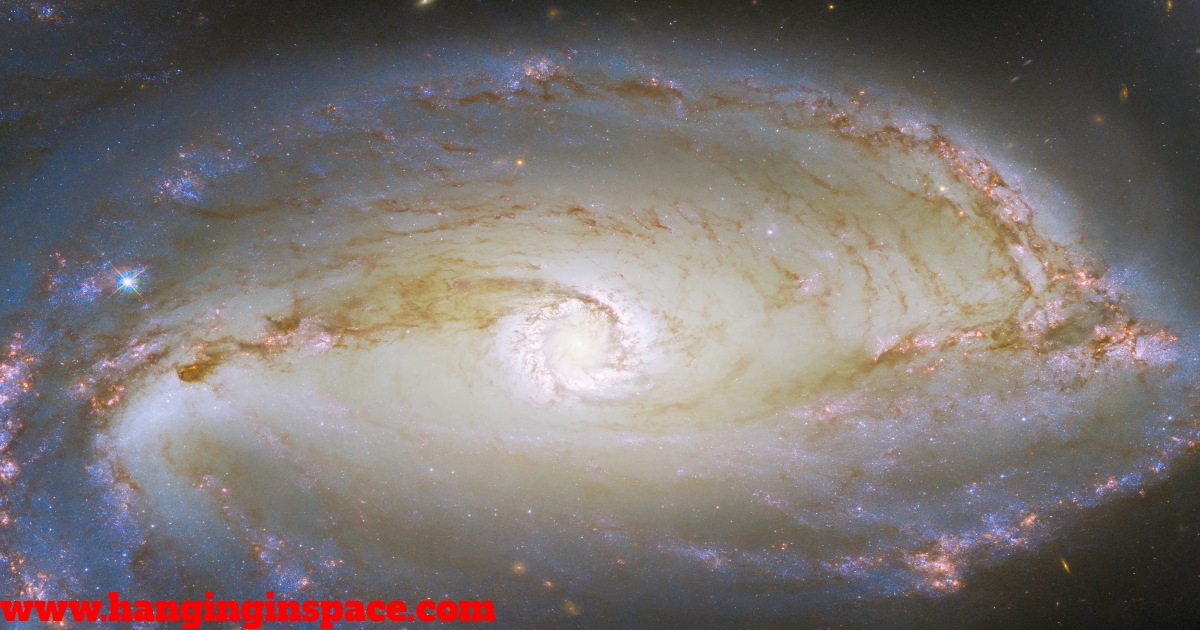Galaxies are vast systems of stars, planets, dust, gas, and dark matter bound together by gravity. Galaxies come in various shapes and sizes. Each galaxy contains billions to trillions of stars, along with other celestial objects such as nebulae, star clusters, and black holes.
Galaxies are the building blocks of the universe, forming clusters and superclusters that are interconnected through gravitational interactions. They play a crucial role in the evolution of the cosmos, serving as the birthplace of stars and providing insight into the structure and dynamics of the universe.

What are the Shapes and Sizes of Galaxies?
Galaxies come in a surprising variety of shapes. Astronomers have categorized them into three main types:
Spiral Galaxies:
These are the most common type, resembling flattened disks with prominent spiral arms winding outwards from a central bulge. Our Milky Way Galaxy falls into this category, with its spiral arms adorned by young, blue stars and vibrant nebulae.
Elliptical Galaxies:
These appear smooth and oval-shaped, lacking the distinct arms of spiral galaxies. They are composed primarily of older, redder stars and are thought to be formed by the merger of smaller galaxies.
Irregular Galaxies:
They have a chaotic and irregular structure. They may be the result of interactions with other galaxies or the product of unique formation processes.
Dwarf Galaxies:
Dwarf Galaxies are the smallest which contain only a few million to a few billion stars. They are often faint and difficult to detect but may be quite numerous and hold clues to the early universe.
Large Galaxies:
These contain hundreds of billions to trillions of stars. Our Milky Way is considered a large galaxy, estimated to contain around 200 billion stars.
Giant Galaxies:
These giant galaxies contain thousands of trillions of stars. They are often elliptical in shape and may have supermassive black holes at their center.
Examples of Galaxies:
Alcyoneus Galaxy: Biggest Galaxy ever
Discovered in 2021 through radio wave observations, Alcyoneus is a supergiant radio galaxy residing in the Abell 2799 cluster roughly 3 billion light-years away Alcyoneus boasts a size of 16 million light-years (including radio lobes).
Dwarfing our Milky Way (which is roughly 100,000 light-years across), Alcyoneus holds the current crown for the largest known galaxy by stellar mass, which is 250 times more massive than our galaxy.
Segue 2: Smallest Galaxy ever
Discovered in 2009 by a team using the Sloan Digital Sky Survey, Segue 2 is the smallest galaxy ever. This tiny dwarf galaxy, a satellite of our Milky Way in the constellation Aries, is estimated to contain a mere 1,000 stars, making it a speck compared to the Milky Way’s billions.
While its age is likely similar to the Milky Way’s at around 13.8 billion years old, Segue 2 is a lightweight, clocking in at under 1% the mass of our galaxy and residing roughly 114,000 light-years from Earth.
Galaxies contain stars, planets, nebulas, black holes, dark matter, dust clouds, interstellar medium, star clusters, and other celestial bodies.

Stars:
Stars are luminous celestial objects composed primarily of hydrogen and helium gas, which undergo nuclear fusion reactions in their cores, producing vast amounts of energy in the form of light and heat. They vary in size, temperature, and brightness, with some stars being hundreds of times larger than the Sun and others being much smaller.
Planets:
Planets are large, celestial bodies that orbit around stars, such as our Sun. They do not produce light of their own but instead reflect the light of the star they orbit. Planets are typically spherical in shape due to their gravitational pull. Each planet has its own unique characteristics, including size, composition, atmosphere, and orbital dynamics.
Nebulas:
Nebulas are vast clouds of dust, hydrogen, helium, and other gases scattered throughout space. They come in various shapes, sizes, and colors, and serve as the birthplaces of stars. Nebulae are illuminated by nearby stars or by the intense radiation emitted by young, newly formed stars within them.
Planetary Nebulas:
Planetary nebulae are glowing shells of gas and dust ejected by certain types of stars at the end of their lives. Despite their name, they have nothing to do with planets. Instead, they were named centuries ago because they resembled planets when observed through early telescopes.
Planetary nebulae are formed when stars like the Sun, reaching the final stages of their evolution, expel their outer layers of gas into space, creating intricate and colorful structures. These nebulae typically have a central, hot stellar remnant called a white dwarf, which illuminates the surrounding gas, causing it to glow brightly.
Black Holes:
Black holes are formidable gravitational forces with such remarkable capabilities that even light cannot escape their grasp. Black holes often lie at the cores of galaxies and exert tremendous control over their physical and evolutionary development. Their significance to science continues to expand quickly, despite the remaining mysteries regarding them.
Dark Matter:
Dark matter is a mysterious and invisible substance that makes up the majority of the matter in the universe. It does not emit, absorb, or reflect light, making it undetectable using traditional astronomical observations.
Its presence is observed from its gravitational effects on visible matter. Dark matter plays an important role in shaping the structure and evolution of the universe. It influences the formation of galaxies and the large-scale distribution of matter in the universe.
Dust Clouds:
Dust clouds are vast concentrations of small, solid particles, typically composed of minerals, ice, and organic compounds, suspended in space. These clouds play a crucial role in the formation of stars and planetary systems, serving as the raw material from which new celestial objects are born.
Dust clouds can vary in size from small, dense regions known as molecular clouds to larger, diffuse structures such as the interstellar medium. They absorb and scatter light, making them visible in certain wavelengths.
Interstellar Medium:
The interstellar medium (ISM) is the vast, diffuse matter that fills the space between stars within a galaxy. It consists of gas, primarily hydrogen, and helium, as well as tiny solid particles known as interstellar dust.
Star Clusters:
Star clusters are groups of stars that are gravitationally bound together and often share a common origin. They come in two main types: open clusters and globular clusters.
- Open Clusters: Open clusters, also known as galactic clusters or stellar associations, are groups of relatively young stars that formed from the same molecular cloud. These clusters typically contain a few hundred to a few thousand stars and are found in the spiral arms of galaxies like the Milky Way. Open clusters are loosely bound and can eventually disperse over time due to gravitational interactions with other stars and the galactic environment.
- Globular Clusters: Globular clusters are much larger and more densely packed groups of stars, containing tens of thousands to hundreds of thousands of stars tightly bound together in a spherical shape. Unlike open clusters, globular clusters are composed of old stars that formed early in the history of the universe. They are typically found in the halos of galaxies, orbiting the galactic core in a halo-like distribution.

Overview:
The clusters of galaxies do not form independently, rather they form groups known as galaxy clusters that combine into larger structures. Our Milky Way galaxy is part of this local cluster. Recent observations show it could soon collide with one of its neighbors the Andromeda Galaxy.
Galaxies provide us with valuable insight into our universe’s structure. By studying their formation, evolution, and interaction we can gain invaluable information that may unlock even greater insights as technology and understanding progresses. With each passing year, we might uncover even greater discoveries.
Conclusion:
The Milky Way continues to be a source of wonder and scientific inquiry. Future space missions will undoubtedly unveil further secrets about its structure, composition, and history.
